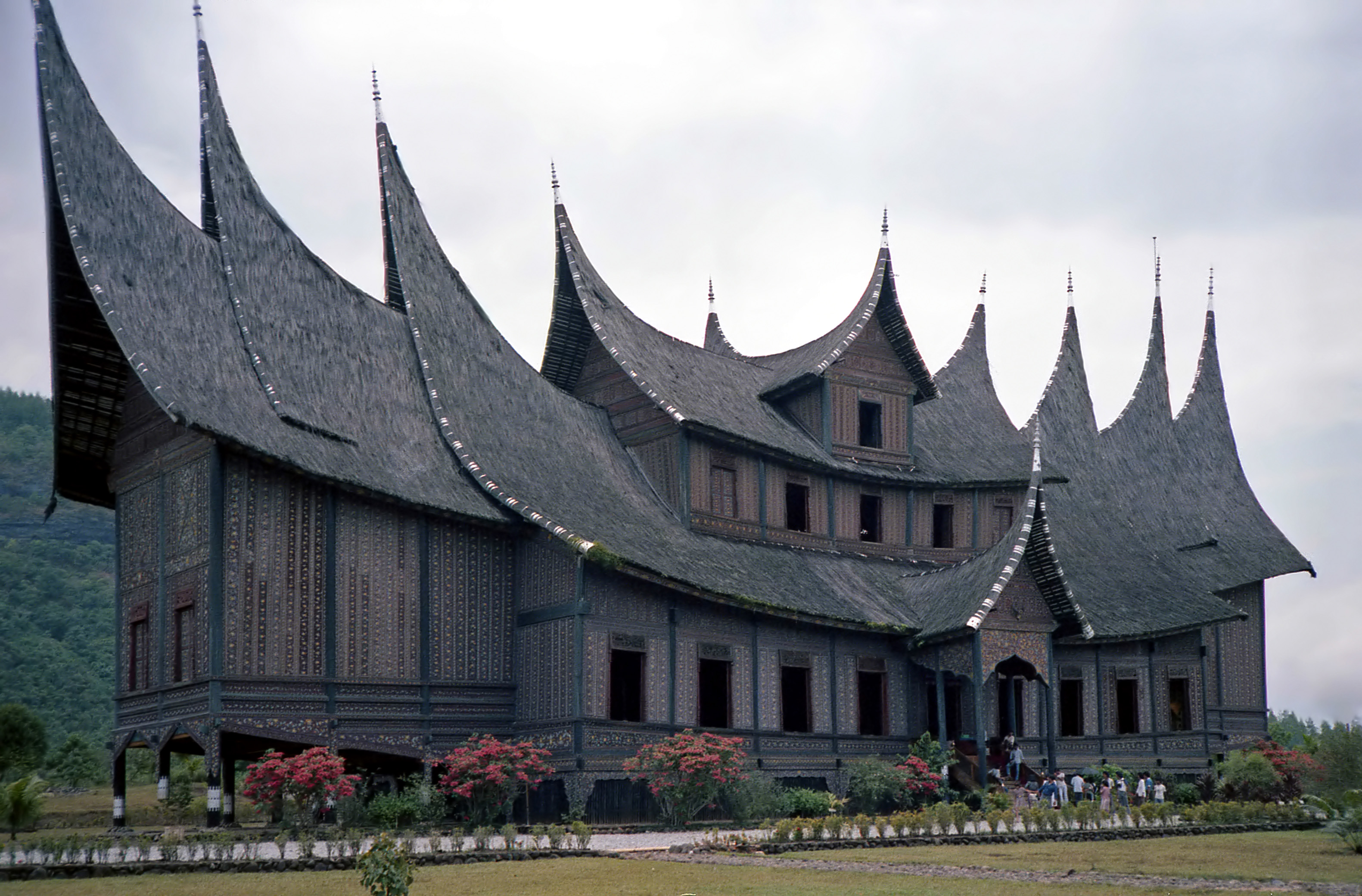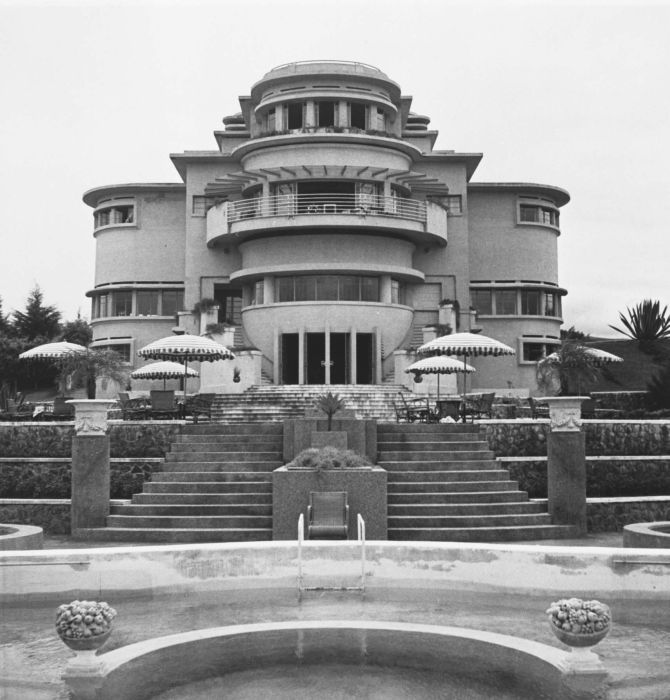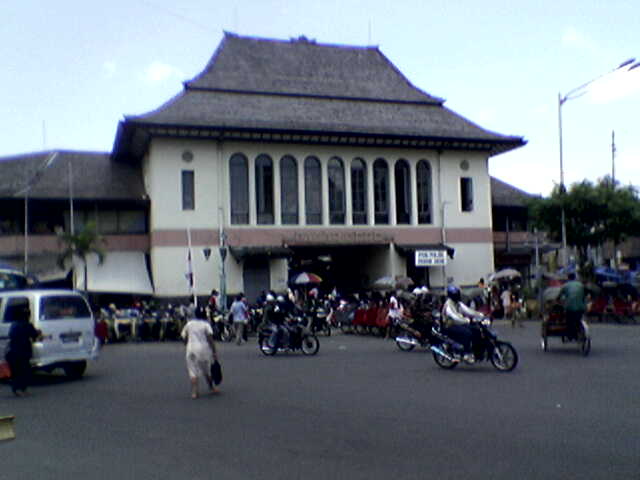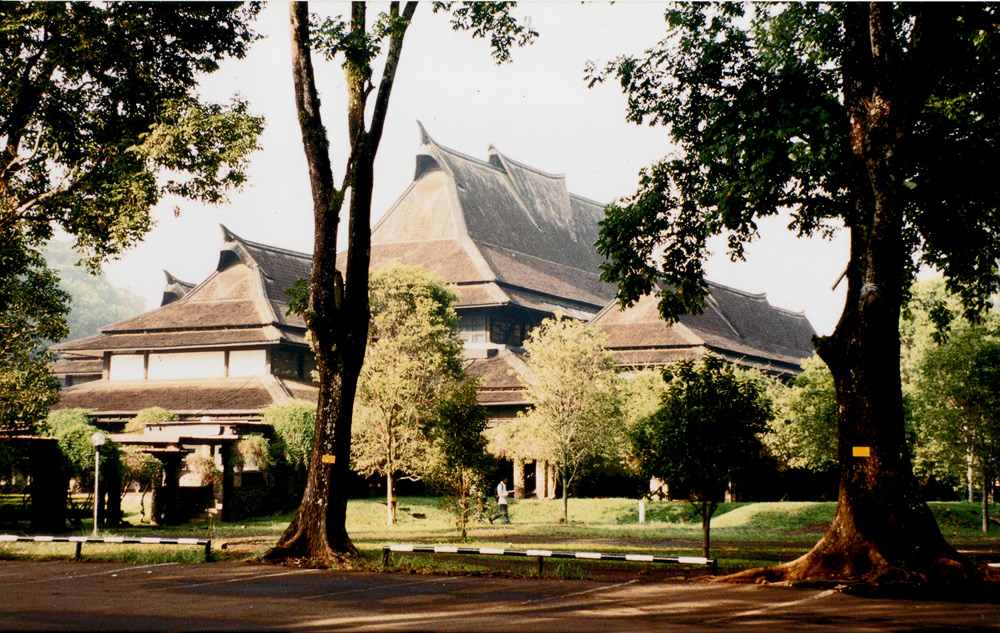|
List Of Indonesian Architects
This list of Indonesian architects includes notable architects, civil engineers, and other historic figures from the archipelago of Indonesia and its history. Also included are those who were born outside Indonesia but are primarily known for their practice within Indonesia. Ancient period *Dang Hyang Nirartha *Gunadharma Early modern period *Albert Aalbers *A.W. Gmelig Weyning *Cosman Citroen * Frans Ghijsels *G.J.P.M. Bolsius *Han Groenewegen *H. von Essen *Henri Maclaine Pont *J. Gerber *J.F.L. Blankenberg *K. Bos *Liem Bwan Tjie *M.J. Hulswit * Pieter Moojen *Soejoedi Wirjoatmodjo *Sukarno * Thomas Karsten *Wolff Schoemaker Contemporary to present *Han Awal *Yori Antar *Andra Matin *Adi Purnomo *Daliana Suryawinata & Florian Heinzelmann *Danny Wicaksono *Sonny Sutanto *Budi Pradono *Ahmad & Wendy Djuhara *Achmad Noerzaman *Ardi Jahya *Tiyok Prasetyoadi *Gatot Surarjo *Eko Prawoto *Irianto PH *Yanto Effendi *Sardjono Sani *Sukendro Prioso & Jeffry Sandy *Denny Gon ... [...More Info...] [...Related Items...] OR: [Wikipedia] [Google] [Baidu] |
Liem Bwan Tjie
Liem Bwan Tjie (6 September 1891 – 28 July 1966) was a prominent architect, and a pioneering figure of modern Indonesian architecture. He belonged to the first generation of professionally trained Indonesian architects. Early life and education Liem was born in Semarang into a Peranakan Chinese family. His father, Liem Tjing Swie, was a successful textile merchant, and thus able to give his children a good Dutch education. Between 1920 and 1926, he studied architecture at the Delft University of Technology in the Netherlands and the Ecole Nationale Superieure des Beaux Arts in Paris. He also gained experience while in Europe, working for a few leading architects of the day, such as Michel de Klerk and Eduard Cuypers. In 1926, he went to the Harvard-Yenching Institute in Peking to prepare for a career as a university lecturer. His life in China was cut short by the chaos of the Sino-Japanese War. Career in Indonesia In 1929, Liem returned home to the Dutch East Indies. The c ... [...More Info...] [...Related Items...] OR: [Wikipedia] [Google] [Baidu] |
List Of Architects
The following is a list of notable architects – well-known individuals with a large body of published work or notable structures, which point to an article in the English Wikipedia. Early architects * Aa ( Middle Kingdom), Egyptian *Amenhotep, son of Hapu (14th c. BC), Egyptian *Anthemius of Tralles (c. 474 – 533–558), Greek *Apollodorus of Damascus (2nd c. AD), Damascus *Aristobulus of Cassandreia (c. 375 – 301 BC), Greek *Callicrates (mid-5th c. BC), Greek *Hermodorus of Salamis (fl. 146–102 BC), Cypriot *Hippodamus of Miletus (498–408 BC), Greek *Ictinus (fl. mid-5th c. BC), Greek *Imhotep (fl. late 27th c. BC), Egyptian *Ineni (18th Dynasty of Egypt), Egyptian *Isidore of Miletus (6th c. AD), Byzantine Greek *Marcus Agrippa (63–12 BC), Roman * Mnesicles (mid-5th c. BC), Athenian * Rabirius (1st–2nd cc. AD), Roman *Senemut ( 18th Dynasty of Egypt), Egyptian *Vitruvius (c. 80–70 BC – post–15 BC), Roman *Yu Hao (喻皓, fl 970), Chinese *Narasimhavarman ... [...More Info...] [...Related Items...] OR: [Wikipedia] [Google] [Baidu] |
Architecture Of Indonesia
The architecture of Indonesia reflects the diversity of cultural, historical and geographic influences that have shaped Indonesia as a whole. Invaders, colonizers, missionaries, merchants and traders brought cultural changes that had a profound effect on building styles and techniques. Numbers of Indonesian vernacular houses have been developed throughout the archipelago. The traditional houses and settlements of the several hundreds ethnic groups of Indonesia are extremely varied and all have their own specific history. The houses hold social significance in society and demonstrate local ingenuity in their relations to environment and spatial organisation. Traditionally, the most significant foreign influence has been Indian. However, Chinese, Arab, and European influences have also played significant roles in shaping Indonesian architecture. Religious architecture varies from indigenous forms to mosques, temples, and churches. The sultans and other rulers built palaces. T ... [...More Info...] [...Related Items...] OR: [Wikipedia] [Google] [Baidu] |
Friedrich Silaban
Friedrich Silaban (16 December 1912 – 14 May 1984) was an Indonesian architect. His most well-known designs, such as the Istiqlal Mosque and the Gelora Bung Karno Stadium in Jakarta, were commissioned during the presidency of Sukarno. Silaban preferred architectural modernism over traditional Indonesian styles. Early life and education Silaban was born on 16 December 1912 in the village of , today in Samosir Regency, as the fifth child of a Batak Protestant Christian Church pastor, Rev. Jonas Silaban. He completed his basic education in Tapanuli, graduating in 1927 before moving to Batavia to attend the ''Koningin Wilhelmina School'', where he studied building design and construction. He graduated from there in 1931. Career After graduating, Silaban began working under Dutch architect J.H. Antonisse who had moved to Batavia in 1914, and between 1931 to 1937 Silaban worked on drawings for public works projects in Batavia. He was then reassigned to Pontianak, where in 1938 ... [...More Info...] [...Related Items...] OR: [Wikipedia] [Google] [Baidu] |
Wolff Schoemaker
Charles Prosper Wolff Schoemaker (25 July 1882 – 22 May 1949) was a Dutch architect who designed several distinguished Art Deco buildings in Bandung, Indonesia, including the Villa Isola and Hotel Preanger. He has been described as "the Frank Lloyd Wright of Indonesia," and Wright had a considerable influence on Schoemaker's modernist designs. Although he was primarily known as an architect, he was also a painter and sculptor. Early life and formative years Wolff Schoemaker was born in , Indonesia on the island of Java, where he would spend most of his life. For his secondary school education, Schoemaker was sent to the KMA (Royal Military Academy) in the Dutch city of Breda.Cor Passchier:''The quest for the ultimate archi ... [...More Info...] [...Related Items...] OR: [Wikipedia] [Google] [Baidu] |
Thomas Karsten
Herman Thomas Karsten (22 April 1884, Amsterdam – 1945, Cimahi) was a Dutch engineer who gave major contributions to architecture and town planning in Indonesia during Dutch colonial rule. Most significantly he integrated the practice of colonial urban environment with native elements; a radical approach to spatial planning for Indonesia at the time. He introduced a neighborhood plan for all ethnic groups in Semarang, built public markets in Yogyakarta and Surakarta, and a city square in the capital Batavia (now 'Jakarta'). Between 1915 and 1941 he was given responsibility for planning 12 out of 19 municipalities in Java, 3 out of 9 towns in Sumatra and a town in Kalimantan (Indonesian Borneo). He received official recognition from both the government through his appointment to the colony's major Town Planning Committee and by the academic community with his appointment to the position of Lecturer for Town Planning at the School of Engineering at Bandung. He died in an internm ... [...More Info...] [...Related Items...] OR: [Wikipedia] [Google] [Baidu] |
Sukarno
Sukarno). (; born Koesno Sosrodihardjo, ; 6 June 1901 – 21 June 1970) was an Indonesian statesman, orator, revolutionary, and nationalist who was the first president of Indonesia, serving from 1945 to 1967. Sukarno was the leader of the Indonesian struggle for independence from the Dutch colonialists. He was a prominent leader of Indonesia's nationalist movement during the colonial period and spent over a decade under Dutch detention until released by the invading Japanese forces in World War II. Sukarno and his fellow nationalists collaborated to garner support for the Japanese war effort from the population, in exchange for Japanese aid in spreading nationalist ideas. Upon Japanese surrender, Sukarno and Mohammad Hatta declared Indonesian independence on 17 August 1945, and Sukarno was appointed president. He led the Indonesian resistance to Dutch re-colonisation efforts via diplomatic and military means until the Dutch recognition of Indonesian independence ... [...More Info...] [...Related Items...] OR: [Wikipedia] [Google] [Baidu] |
Soejoedi Wirjoatmodjo
Soejoedi Wirjoatmodjo (December 27, 1928 in Surakarta – June 17, 1981 in Jakarta) was an architect in Indonesia who was active during the late 1960s and mid 1970s. In 1964, he was asked by President Sukarno to be in charge as chief architect for national architectural projects in the Jakarta. Soejoedi is considered to be the first native architect of the Post-Colonial period that is considered as a proponent of modernist architects and designers. Biography Soejoedi was born in Surakarta in 1928. As a young man, he supported nationalist ideals. During the period of National Revolution, Soejodi joined the Student Fighters of Brigade 17 in Surakarta to counter military offensive from the Dutch between 1945 and 1949. When the Dutch leave Indonesia in 1949, one year later Soejoedi applied as an architect in the Building Department of the Technical College in Bandung, which still had a professional Dutch lecturer. From the quality of his works, Soejoedi was nominated and won a scholars ... [...More Info...] [...Related Items...] OR: [Wikipedia] [Google] [Baidu] |
Pieter Adriaan Jacobus Moojen
Pieter Adriaan Jacobus "Piet" Moojen (26 June 1879 - 1 April 1955) was a Netherlands-Indies architect, painter and writer. He studied architecture and painting in Antwerp. He lived and worked in the Dutch East Indies from 1903 to 1929. He was one of the first architects to implement Modernism in the Dutch East Indies. Moojen became widely known for his work on the Dutch entry at the Paris Colonial Exposition in 1931. He was active as an architect between 1909 and 1931. As a member of the ''Commisie van toesicht op het beheer van het land Menteng'', Moojen was influential in designing the town planning for Batavia's ''Nieuwe Gondangdia'' garden city (now Menteng). He established the Kunstkring for both Bandung (1904) and Batavia. As a painter he was a member of the Bataviasche Kunstkring and actively participated in exhibitions. Many of his paintings were kept in Amsterdam's Tropenmuseum. Moojen was interested in Indonesian culture, especially the ancient monuments. His ''Kunst o ... [...More Info...] [...Related Items...] OR: [Wikipedia] [Google] [Baidu] |
Henri Maclaine Pont
Henri Maclaine Pont (Meester Cornelis, Batavia, Dutch East Indies, Batavia, 21 June 1884 – The Hague, 3 December 1971) was a Dutch architect and archaeologist active in Indonesia, acclaimed for his synthesis of Architecture of Indonesia, Javanese and western architecture. He is seen as the "father" of modern vernacular architecture of Indonesia. Biography Henri Maclaine Pont studied civil engineering in Delft. After graduation, he moved back to the Dutch East Indies where in 1911 he received his first major work, the design of the Semarang-Cheribon Steam Tram Company headquarters. In Semarang he set up his own firm, which was later joined by Thomas Karsten. Soon however he fell ill, and being forced to return to the Netherlands, sold the firm to Karsten, Lutjens and Steenstra Toussaint.C.J. van Dullemen: ''Tropical Modernity: Life and Work of C.P. Wolff Schoemaker'', SUN 2010 He lived and worked in various places in Java and studied the Javanese pre-Islamic architecture. He ... [...More Info...] [...Related Items...] OR: [Wikipedia] [Google] [Baidu] |
Architect
An architect is a person who plans, designs and oversees the construction of buildings. To practice architecture means to provide services in connection with the design of buildings and the space within the site surrounding the buildings that have human occupancy or use as their principal purpose. Etymologically, the term architect derives from the Latin ''architectus'', which derives from the Greek (''arkhi-'', chief + ''tekton'', builder), i.e., chief builder. The professional requirements for architects vary from place to place. An architect's decisions affect public safety, and thus the architect must undergo specialized training consisting of advanced education and a ''practicum'' (or internship) for practical experience to earn a Occupational licensing, license to practice architecture. Practical, technical, and academic requirements for becoming an architect vary by jurisdiction, though the formal study of architecture in academic institutions has played a pivotal role in ... [...More Info...] [...Related Items...] OR: [Wikipedia] [Google] [Baidu] |





